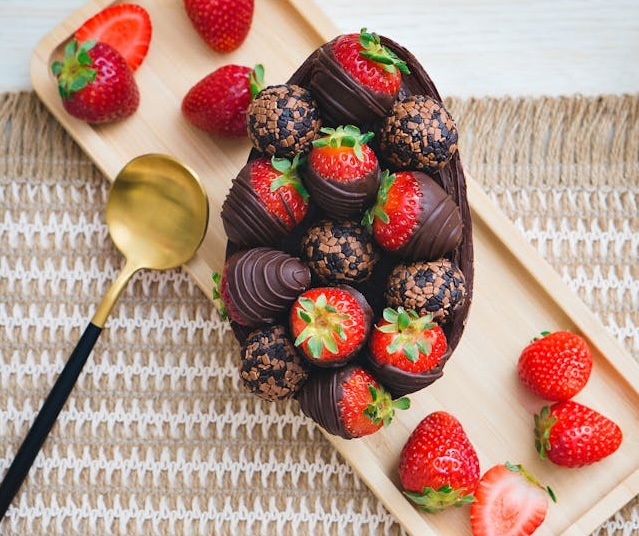The Science of Flavor Pairings: Why Certain Foods Taste Better Together
Have you ever wondered why peanut butter and jelly, tomato and basil, or chocolate and coffee taste so perfect together? The answer lies in the science of flavor pairings, which explores how chemical compounds, sensory perception, and even cultural influences shape the way we experience food.

The Role of Flavor Compounds
At a molecular level, foods contain specific compounds that create their distinct aromas and flavors. When two ingredients share similar volatile compounds, they tend to complement each other well.
-
Strawberries & Chocolate: Both contain methylbutyrate, which gives them a fruity, sweet aroma.
-
Tomatoes & Basil: Both share eugenol, a compound that enhances their fresh, slightly spicy notes.
-
Coffee & Chocolate: Both contain methylxanthines, which contribute to their deep, bitter, and rich taste.
The Five Basic Tastes and Contrast Pairing
Another reason certain foods pair well is how they balance the five primary tastes: sweet, salty, sour, bitter, and umami. Contrasting these flavors can create a more dynamic taste experience.
-
Sweet & Salty:
-
Chocolate & Sea Salt
-
Watermelon & Feta Cheese
-
Caramel & Pretzels
-
Sour & Sweet:
-
Lemon & Honey
-
Strawberries & Balsamic Vinegar
-
Yogurt & Berries
-
Umami & Bitter:
-
Parmesan & Arugula
-
Soy Sauce & Brussels Sprouts
-
Dark Chocolate & Espresso
Texture and Mouthfeel Pairing
Texture plays a key role in why some foods work together. Crunchy and creamy pairings, for example, create an exciting contrast.
-
Crunchy & Creamy:
-
Peanut Butter & Crackers
-
Ice Cream & Waffle Cones
-
Avocado & Toast
-
Smooth & Fizzy:
-
Cheese & Sparkling Wine
-
Chocolate & Champagne
-
Ice Cream & Root Beer (Root Beer Float)

Cultural and Regional Influences
Some flavor pairings come from centuries of tradition and regional availability of ingredients.
-
Asian Cuisine: Soy sauce and ginger complement umami-rich dishes.
-
Italian Cuisine: Tomato and basil enhance Mediterranean flavors.
-
Mexican Cuisine: Lime and chili create a vibrant balance of heat and acidity.
Experimenting with Flavor Pairings
Want to try creating your own perfect combinations? Here are some unusual but scientifically-backed pairings:
-
Strawberries & Aged Balsamic Vinegar – Enhances sweetness with acidity.
-
Pineapple & Blue Cheese – The tangy, sharp cheese contrasts the tropical fruit’s sweetness.
-
Dark Chocolate & Roquefort Cheese – A unique blend of bitterness and creaminess.
Final Thoughts
Flavor pairing is a mix of science and art. By understanding the chemical compounds, taste contrasts, and textural interactions, you can elevate your cooking and create unforgettable culinary experiences.












